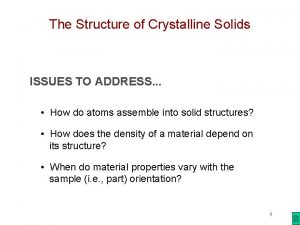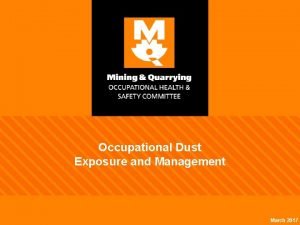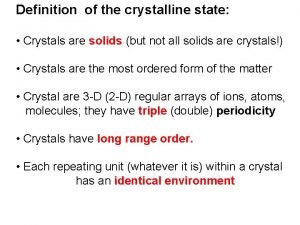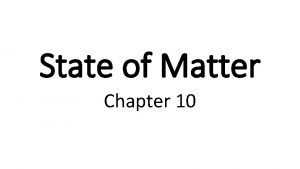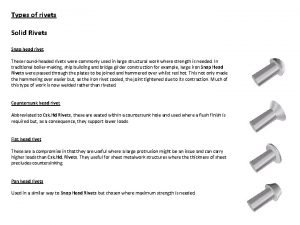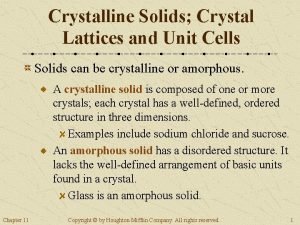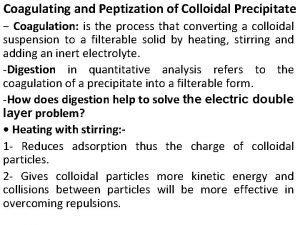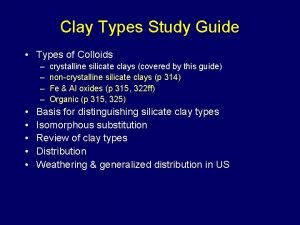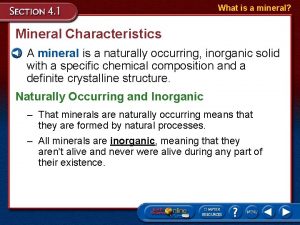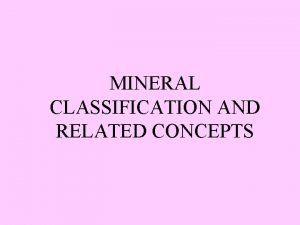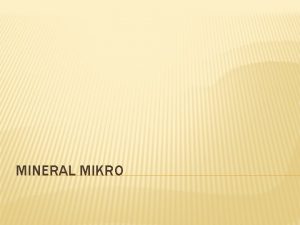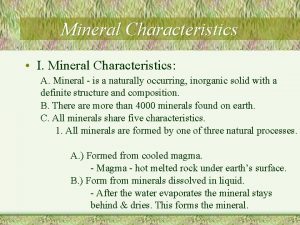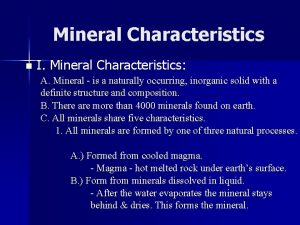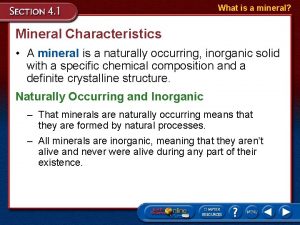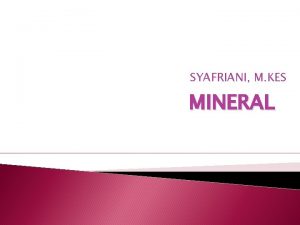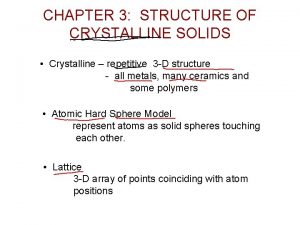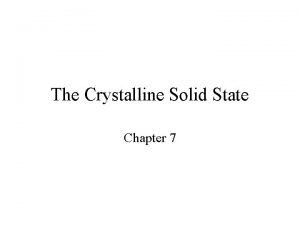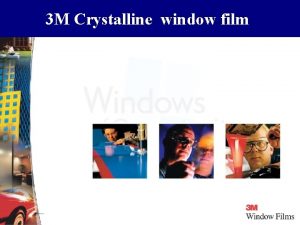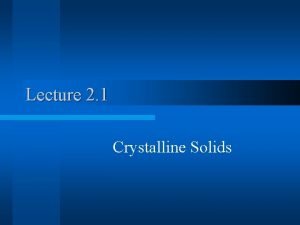Silica Crystalline silica is a common mineral found


















- Slides: 18

Silica

Crystalline silica is a common mineral found in the earth’s crust. Concrete, mortar, sand, and stone are some materials that contain crystalline silica. It is also used to make products, such as bricks, ceramics, glass, pottery, and artificial stone. PPT-SM-S 2017 2

Around 2. 3 million workers are exposed to crystalline silica on the job. The hazard for workers exists when specific tasks create respirable dust that is released into the air. PPT-SM-S 2017 3

Very small particles of crystalline silica are known as respirable crystalline silica dust, or simply silica dust. Silica dust is around 100 times smaller than the sand you find on the beach. PPT-SM-S 2017 4

Silica dust is created by high -energy operations, including cutting, sawing, grinding, drilling, and crushing materials that contain crystalline silica. PPT-SM-S 2017 5

Activities that create silica dust include: q. Abrasive blasting with sand q. Sawing brick or concrete q. Sanding or drilling into concrete walls q. Grinding mortar q. Manufacturing brick, concrete blocks, or ceramic products q. Cutting or crushing stone PPT-SM-S 2017 6

Workers can also be exposed to silica dust during operations that use industrial sand, including foundry work and hydraulic fracturing. Credit: NIOSH PPT-SM-S 2017 7

When a worker inhales silica dust, they increase their risk of developing serious silica-related illnesses. These illnesses include: q. Silicosis q. Lung cancer q. Chronic obstructive pulmonary disease (COPD) q. Kidney disease PPT-SM-S 2017 8

Silicosis is a disease that happens when silica dust enters your lungs and causes scar tissue to form. This makes it difficult for your lungs to take in oxygen. There is no cure for silicosis. PPT-SM-S 2017 9

The Occupational Safety and Health Administration’s (OSHA) Respirable Crystalline Silica standard for general industry and maritime requires companies to limit worker exposure to silica dust. PPT-SM-S 2017 10

Companies are required to assess worker exposure to silica dust if it may be at or above an action of level of 25 µg/m 3 (micrograms of silica per cubic meter of air), averaged over an 8 -hour day. PPT-SM-S 2017 11

Companies must protect workers from silica dust exposure above the permissible exposure limit (PEL) of 50 µg/m 3, averaged over an 8 -hour workday. PPT-SM-S 2017 12

Companies must use engineering controls and work practices as the main way to keep worker exposure at or below the PEL. Examples include: q. Using wet methods for cutting and sawing crystalline silica-containing materials q. Using local exhaust ventilation to keep dust that contains silica out of the air q. Limiting workers’ access to areas where they could be exposed above the PEL q. Using housekeeping methods that do not create airborne dust where possible PPT-SM-S 2017 13

Respirators must be provided to workers when engineering and work practices cannot keep silica dust at or below the PEL. PPT-SM-S 2017 14

Companies must also: q. Create and use a written exposure control plan that identifies tasks that involve exposure and how workers will be protected q. Train workers on work operations that can result in silica dust exposure and ways to limit their exposure PPT-SM-S 2017 15

For workers exposed at or above the action level for 30 days or more per year, companies must offer medical exams every 3 years, including chest X-rays and lung function tests. Companies must also keep records of exposure measurements, objective data, and medical exams. e r u s o p Ex nts e m e r u meas PPT-SM-S 2017 ta a D e v i Object l a c i d e M Exams 16

Respirable crystalline silica is a serious health hazard to workers. Workers exposed to silica dust are at an increased risk of developing serious silica-related illnesses. Companies must use engineering controls and work practices to protect workers from silica dust exposure at or above the PEL. PPT-SM-S 2017 17

Copyright © 2016 by PEC/Premier Safety Operations, LLC
 Atomic packing factor of fcc
Atomic packing factor of fcc Crystalline solid and amorphous solid
Crystalline solid and amorphous solid Silica dust exposure
Silica dust exposure Difference between colloidal and crystalline precipitate
Difference between colloidal and crystalline precipitate Crystalline solid and amorphous solid
Crystalline solid and amorphous solid Definition of crystalline
Definition of crystalline Solid state physics
Solid state physics Difference between colloidal and crystalline precipitate
Difference between colloidal and crystalline precipitate Crystalline solids
Crystalline solids Crystalline solid
Crystalline solid Mechanical entrapment coprecipitation
Mechanical entrapment coprecipitation Snap head
Snap head Crystalline substances
Crystalline substances Destiny 2 crystalline formations
Destiny 2 crystalline formations Peptization
Peptization Crystalline vs amorphous
Crystalline vs amorphous Crystalline silicate clays
Crystalline silicate clays Crystalline solid and amorphous solid
Crystalline solid and amorphous solid Is fudge a crystalline candy
Is fudge a crystalline candy
